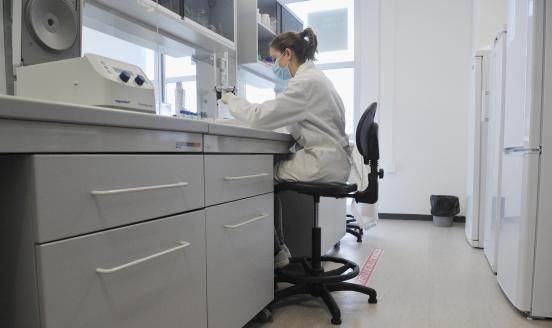The world innovation landscape: Asia rising?
Global growth in research and development has been vigorous, with both public and private R&D investment increasing and growing more rapidly outsi
Global growth in research and development has been vigorous, with both public and private R&D investment increasing and growing more rapidly outside the previously dominant centres of North America, Europe and Japan. The counties with the largest R&D spends are the US, the UK, France, Germany, Japan, China and South Korea. These seven countries account for about 71 percent of worldwide R&D expenditure.R&D spending is increasing especially rapidly in Asia, most spectacularly in China. China is now the world’s second R&D spender behind the US and spends as much as Germany, France and Italy combined. Other south-east Asian countries are also rapidly increasing their R&D spends, in particular Korea, while Japan is an incumbent R&D stronghold.
China’s rise to the position of the world's second biggest R&D spender is a consequence of its spectacular growth in overall R&D in the last ten years, even outpacing its GDP growth. Its “R&D intensity” doubled between 1999 to 2009, reaching 1.7 percent, about the same ratio as the UK. While the US, Japan and Korea have high R&D intensities, the EU taken as a whole performs very modestly, due to some large countries with low scores, such as Italy and Spain.
Who is behind the Asian R&D spending growth? Contrary to expectations, government spends relatively less on R&D in Asia than the US and Europe. That of course is not to say that the government has major influence over private R&D decisions, particularly in China, where many large private companies are state controlled or influenced.
Since businesses account for the greatest share of total R&D spending in most countries, differences in business structure go a long way to help explain differences in trends in R&D-to-GDP ratios. Asia's increased innovation spending is most prominently related to information and communication technologies, an area with high technological opportunities and positive externalities acting on other sectors. Europe’s failure to increase its R&D-to-GDP ratio is often attributed to its failure to specialise in high-tech sectors.
But how efficient is the increase in Asian R&D investment? Is it resulting in a new generation of inventions? A good proxy for innovation is patents. The evidence suggests that growth in Asian R&D investment is translating into increasing patent filings. In fact, Asian patenting has increased even more rapidly than Asian R&D investment. In line with this, the US share of global patent filings is declining, and the EU's position is also being eroded. But although the increase in China’s share of world patent applications has risen faster than its share in world R&D expenditure, it remains so far a minor power, with the same patenting weight as much smaller Korea.
Moreover, when looking at the most valuable inventions (i.e. those for which protection is sought in all major world markets (the US, EU and Japan), China's shares remain tiny, indicating that the wave of new Chinese inventions does not yet have a strong international orientation. The US maintains its dominant position in this respect, together with Japan, while the EU’s share is declining considerably.Asian growth in R&D patents is very much focused on ICT. In other technologies with high growth potential, such as clean technologies and nanotechnology, the global playing field remains open. World markets for pharmaceuticals remain dominated by the EU and US. Overall, the Chinese and Korean economies are still not specialised in knowledge-intensive goods and services.
When looking at the economic value created by innovative new goods and services, all of the countries with major R&D expenditures are increasingly concentrating their economic activities in knowledge-intensive goods and services. In this respect, the US is the most specialised and China the least, with the EU in between. Furthermore, each region specialises in different high-tech sectors. While the US and Europe relocated ICT manufacturing to Asia, the services and the pharmaceuticals sectors remain western strongholds. China’s dramatically increasing exports of high-tech goods, particularly ICT goods, might seem impressive, resulting in wider EU and US trade deficits with China for these goods. But the Chinese role is still mostly assembly, with limited value added contributed locally. China is not yet capturing much value from high-tech manufacturing nor capitalising on its rising science and technology capabilities in these areas. Overall, although the Asian, and particularly, the Chinese rise in innovation is a real phenomenon, it is still far less materialised than Asia's rise in science and R&D investment. China still has to become a developer of high-value inventions for world markets, beyond ICT manufacturing. And it still has to capture the value from inventions beyond assembly.
It would be wrong to discount China's innovation potential, however. China clearly has the ambition to become a world-leading innovator, creating and capturing high-tech value added, particularly in targeted areas. But it would be equally wrong to see the rise of China and other Asian countries in innovation as a threat to Europe. Nevertheless, the opportunities that the globalisation of R&D and innovation can offer to Europe cannot be taken for granted. As the data has shown, Europe is struggling more than the US to build technology strongholds in knowledge intensive goods and services, particularly in new areas and with high quality new technology. Europe needs to boost its innovation capacity if it wants to keep its seat at the global innovation table. Although this is a call to all European countries, it holds especially for large yet low-innovating countries such as Italy.
The most relevant issue for the EU is not so much if Asia's science, technology and innovation capacity will continue to increase, but who will be able to use this capacity for value creation and value capture. Corporate R&D and innovation is highly concentrated in a few global players. How these firms react to and ride on the Asian science and technology rise will be critical for assessing the impact on Europe.



